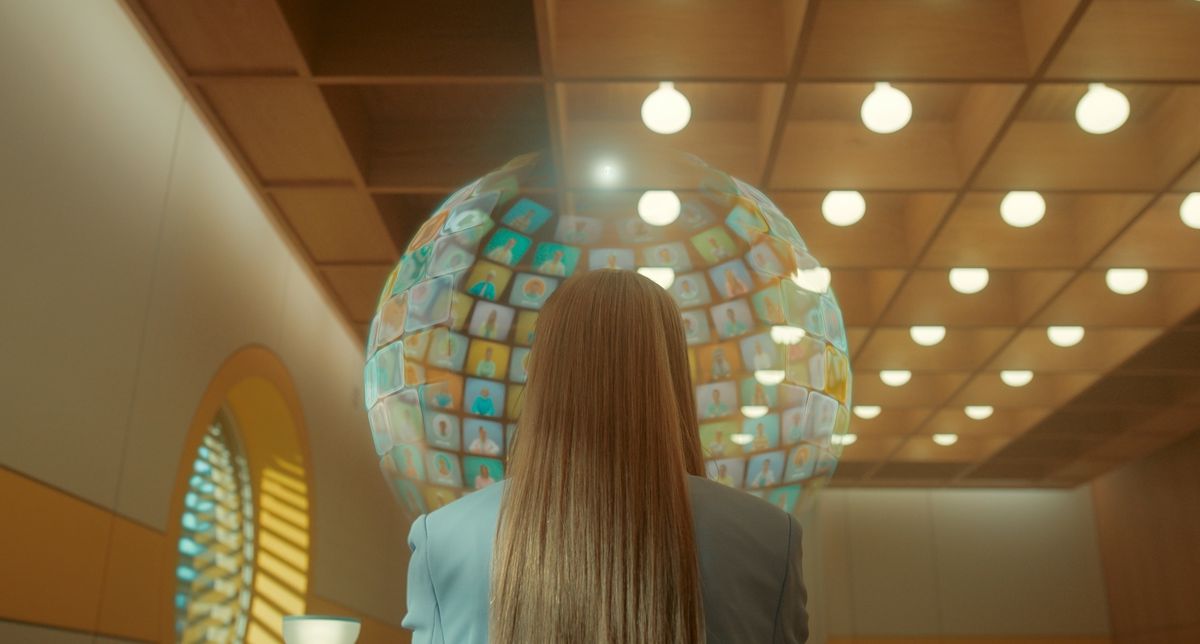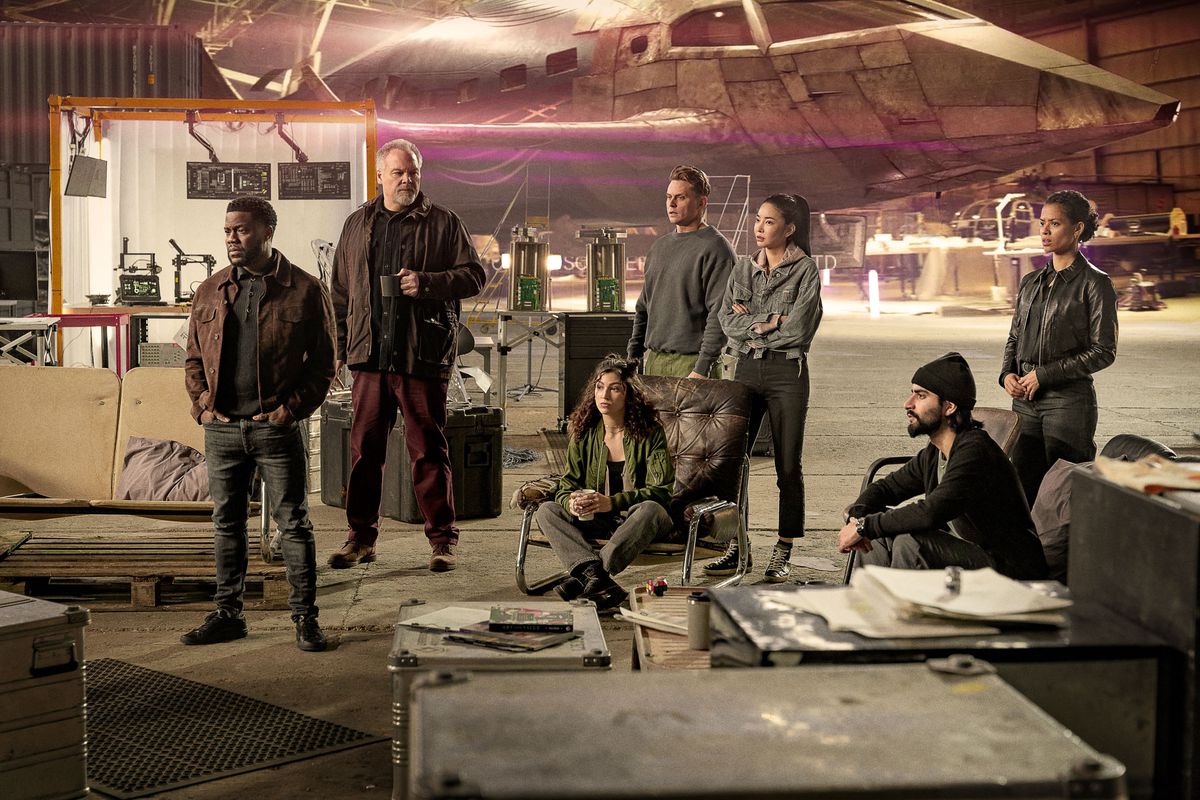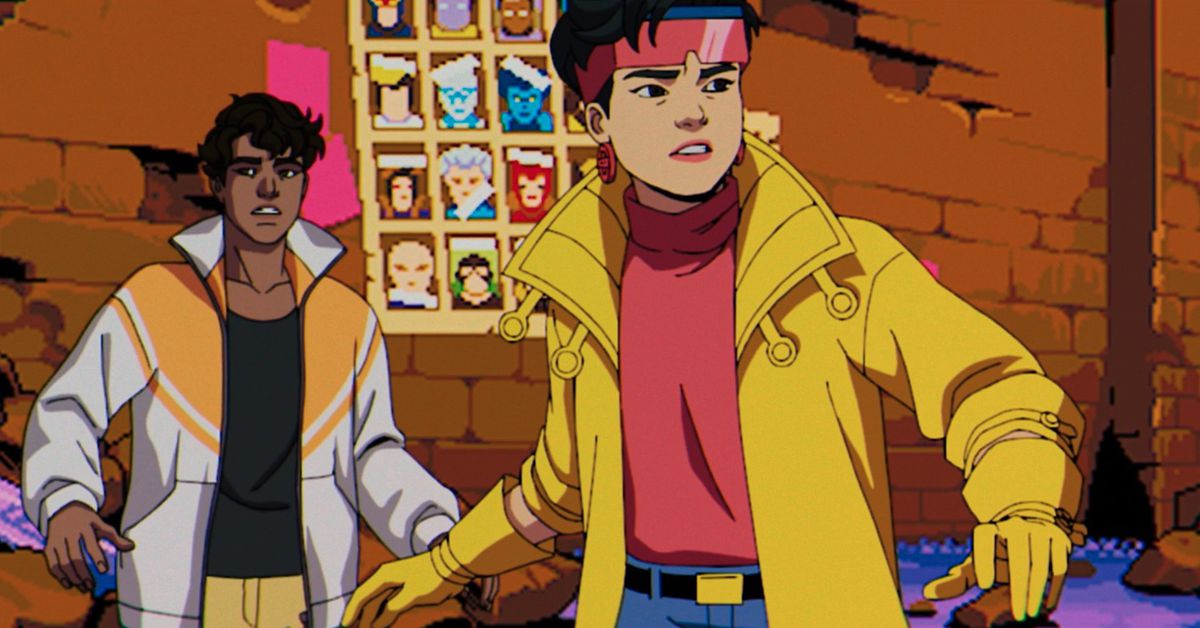For the team behind Blue Eye Samurai, there was no debate on whether to depict graphic acts of intimacy, even if it meant courting discourse. For all its high-impact fight sequences and blood-soaked melodrama, the show was ultimately about survival in 17th-century Japan, and for women of Edo Japan, that involved sex.
Blue Eye Samurai’s eight-episode first season follows a warrior named Mizu who poses as a man to make it in a male-dominated world — specifically, the economic underbelly of ammunition and prostitution trade, where her current target makes out like a bandit. But threaded throughout the series are glimpses into other lives, from a brothel owner who caters to any fetish in order to keep men under her thumb to a wayward samurai whose thirst for revenge distracts from the pleasures right in front of him. Sexual encounters become yet another venue for exploring the layered human experiences of the era, and a quick way to convey that this animated series is unlike any other Western animated series on television. For director Jane Wu, whose background is in action design and martial arts but who spent a season working on Game of Thrones, getting these graphic scenes right meant choreographing the sex with as much intention as a piercing samurai showdown.
“[Creators Michael Green and Amber Noizumi] were really great about writing these adult scenes, these sensitive scenes, so beautifully that my job was just to render them, but render them with just as much sensitivity,” Wu tells Polygon. “We always want to make sure that these sex/bedroom scenes have a point of view. When you give them a point of view, it doesn’t become gratuitous. And a lot of these points of view are from women’s points of view.”
:no_upscale()/cdn.vox-cdn.com/uploads/chorus_asset/file/25073688/blue_eye_samurai.jpg)
Creating that point of view, and the constant clash of delicacy and brutality, started with a vision for the overall design of Blue Eye Samurai. She found a breakthrough in her childhood: memories of watching bunraku, the classical Japanese puppet theater known for bold lines, subtle movement, and occasional severe expression. Through animation, Wu and her team at the French studio Blue Spirit could capture the “eerie” quality of the puppets in both design and movement while maintaining a grounded sense of reality. When Noizumi and Green decided to write bunraku puppets into the fifth episode, the whole experience came full circle.
“That was so meta,” Wu says, “because we were already doing puppetry inside of animation.”
The wizardry of Wu’s animated puppetry beams through in the various fighting styles seen throughout season 1. While Mizu might be the most ferocious killer in Japan, she was never formally trained, giving her swordplay a nimbleness that’s easily translated through the bunraku-inspired approach. But it’s also key to the sex scenes, where the audience needs to feel touch and heat from what can often be a distancing medium. This is where an action choreographer’s brain helped Wu.
:no_upscale()/cdn.vox-cdn.com/uploads/chorus_asset/file/25073685/blue_eye_samurai_akemi.jpg)
In episode 2, Akemi, a princess whose father hopes to marry her off for power, slips into the bedroom with her real love, Taigan, a swordsman recently defeated by Mizu. Taigan is spiraling after defeat, his continued life a fate worse than death. To pull him out of depression, out of love and desperation for her own life, Akemi sits him down, explains that there’s no dishonor over being attacked, and then disrobes. Her monologue continues as the two have sex for the first time. “Strike with your blade,” she tells Taigan, as they come closer and closer. Though wooing him steadies her own life, for Akemi, it’s still an act of passion. But a quick shot of Akemi staring into the mirror when it’s all over silently speaks to the complexity of using her body in this way.
Unlike most films or television shows that might cut from romantic initiation straight to post-coital chat, Blue Eye Samurai follows the couple without interruption. After the two climax, the drama continues to unfold, Akemi rolling off Taigan, reorienting herself, and then waiting for a response on the more pressing matter of Taigan’s meltdown. The swordsman, to her surprise, admits she’s right about his embarrassment — it’s pointless. Though now he wants to hunt down Mizu for a real challenge.
Akemi continues to wield sex and the desperation of men to her will. It’s not the most obvious echo of Mizu’s own quest, but it’s there, and certainly intentional.
“Akemi and Mizu are the opposite sides of a coin of what women can be,” Wu says. “Sex was Akemi’s weapon. That’s all she could use. Mizu uses her knives and her katanas and all that. So [the sex scenes] are just a way for us to show you the diversity of what women at that time use to get what they need.”
Blue Eye Samurai season 1 is now streaming on Netflix.






